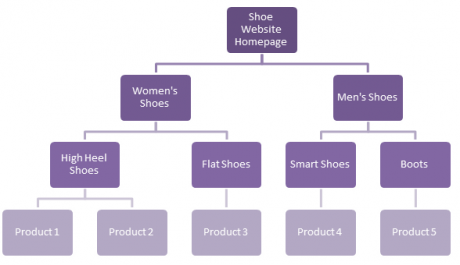Amidst the furore surrounding Google’s Mobile-Friendly Update, dubbed Mobilegeddon by those keen to turn an algorithm update into a scare story via the tried and tested method of adding the suffix “geddon”, another algorithm update by the big G came along and slipped rather quietly under the radar. This update wasn’t given a catchy name but it did happen and its purpose was clear: sites should not be benefiting from doorway pages ranking in search results.

What is a Doorway Page?
You’re asking a fair question, seeing as it’s probably not a phrase in particularly common parlance. Google’s webmaster guidelines define a doorway page thusly:
Doorways are sites or pages created to rank highly for specific search queries. They are bad for users because they can lead to multiple similar pages in user search results, where each result ends up taking the user to essentially the same destination. They can also lead users to intermediate pages that are not as useful as the final destination.
So ultimately doorway pages, thin content SEO landing pages, are somewhat of a relic of the past, from a bygone era of SEO best practice. An example of a doorway page would be where you’ve built a page on your website specifically to target a variation on a keyword you’d like to rank for whilst still having other variations of that same keyword served by their own similar pages. The idea is that by having separate pages to target each individual keyword variation you maximise your return in the search results.
To expand upon this example let’s assume you’re a provider of local services and you want to capture traffic from those searching for your services within your local area. If you’re a plumber in Paignton or a carpenter in Carshalton, you know you want to be popping up in the search results when folk search [service] + [town]. But, if you know that where you’re based isn’t the full extent of your coverage area you’re also going to want to be found when those searches are [service] + [nearby town] so suddenly the plumber in Paignton wants everyone to think he’s a plumber in Torquay, Totnes, Brixham and Dartmouth as well.
A sneaky shortcut to try and capture as many of these local search terms as possible would be to pad out your website with individual pages each serving very similar content but being just different enough that they’d not be considered duplicate content (because Google frowns upon duplicate content), and each of these pages would target just the one location. By being specifically geared to capture the search traffic for Plumber in Paignton, Plumber in Torquay, Plumber in Totnes etc. your individual pages stand a greater chance of ranking competitively when users seek out these lesser searched and longer tail search terms.
What’s Wrong With That Then?
To identify why Google considers this a problem we need to go back to basics in terms of Google’s primary aim: make as much money as possible by collecting user data Provide users with the most relevant results for their search query. If a user searches Carpenter in Carshalton but is served results from woodworkers in Mitcham, Sutton and Croydon who’ve deliberately targeted this search term, that user isn’t necessarily getting the result they wanted. Perhaps that search user knows full well there’s only one carpenter in Carshalton, and that’s the one they want to use, whether that be due to recommendations, a good previous experience or a good old fashioned fear of outsiders.
Ultimately these pages deliberately set up to target very specific search phrases are aimed at gaming the system. They’re trying to fool Google and show it up for the dumb robot it is. Well Google has said “no more” and decided to take action against such tactics.
It’s pretty easy to see why this sort of content would be considered spam. You’re not really adding anything of value to the user by regurgitating the same marketing spiel about your amazing wood carving skills ad nauseum, simply changing the location you claim to be serving in each instance. If a user lands on your doorway page from search results, its value is significant to your business, but it hasn’t offered that user anything they couldn’t have gotten from any number of similar pages on your website. So what should you be doing with your onsite content strategy? This post offers a little extra detail around the matter.
Identiftying a Doorway Page

My example above uses a fairly easy to identify tactic and if you know your site has been using this tactic as a method to capture more search traffic, and no doubt benefiting from it, it’s probably time to review that in light of the new algorithm update. However, these pages aren’t always going to be as simple to pick up on as a [service] + [location] combo.
Delving a little deeper Google has helpfully provided a list of questions you may wish to ask yourself to determine whether you could be guilty of harbouring these wanted criminals:
- Is the purpose to optimize for search engines and funnel visitors into the actual usable or relevant portion of your site, or are they an integral part of your site’s user experience?
- Are the pages intended to rank on generic terms yet the content presented on the page is very specific?
- Do the pages duplicate useful aggregations of items (locations, products, etc.) that already exist on the site for the purpose of capturing more search traffic?
- Are these pages made solely for drawing affiliate traffic and sending users along without creating unique value in content or functionality?
- Do these pages exist as an “island?” Are they difficult or impossible to navigate to from other parts of your site? Are links to such pages from other pages within the site or network of sites created just for search engines?
(Source: http://googlewebmastercentral.blogspot.co.uk/2015/03/an-update-on-doorway-pages.html)
So essentially your primary goal is to determine what purpose a page serves and whether that purpose benefits the user, or your search rankings. Don’t waffle on about nothing for the sake of creating another page of indexable content. There’s nothing wrong in having a concise website with few pages if what you offer is relatively niche and serves only a narrow specialist market segment.
Doorway Pages and eCommerce Websites

SEO for local service providers is very different to eCommerce SEO and consequently shouldn’t be treated in the same way. If you’re an online store with hundreds or even thousands of products, many of which might be very similar to one another, should you be concerned that their similarities mean your pages could be flagged as doorway pages? In short, no. There’s a huge difference between individual product pages acting as entry points to your website and writing generic content with a very specific title to try and draw traffic seeking that key phrase. Provided you stock and sell blue jeans, black jeans and pink jeans, the fact that they share similarities as fashionable denim legwear is irrelevant. They are all individual and unique items among your inventory that you want users to be able to find because there’s every chance that users will be looking for them.
Of course in the competitive world of fashion eCommerce with ever changing trends dictating huge variances in search volumes for different terms, not having the products being sought in stock can do you more harm than good. There’s less than zero point attracting search visitors to your site with a glitzy page promoting your fabulous range of pink jeans if you can’t fulfil any demand they may achieve (and why wouldn’t they be in demand? We’re talking about a seriously on trend item of fashionable garb here).
SEO best practice is a continually evolving process and the list of dos and don’ts grows ever longer by the week. However, in most cases we can predict Google’s moves to combat spam and tactics aimed at gaming their system, because they’re easy to recognise as soon as people start profiting from them. The use of doorway pages as a method by which to attract greater levels of traffic to a website has been abused for a number of years now, which is a tell-tale sign it will inevitably come under fire by those hardworking elves in the infamous Google webspam team, and so it has come to be.
The best way to avoid falling foul of Google’s guidelines is to simply play by the rules and avoid tactics that offer only short term gain. It’s a cliché but putting content first will always stand you in good stead. The more you pander to what you think Google and the other search engines desire, over focusing on what your potential customers would like to see, the further you get from that nirvana of ideal user experience.
Follow my contributions to the blog to find out more about digital trends, content marketing and travel SEO, or sign up to the ThoughtShift Guest List, our monthly email, to keep up-to-date on all our blogposts, guides and events.






